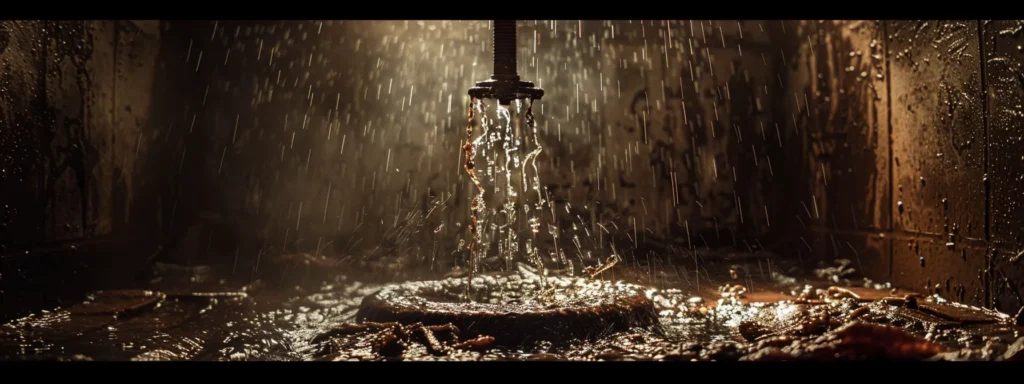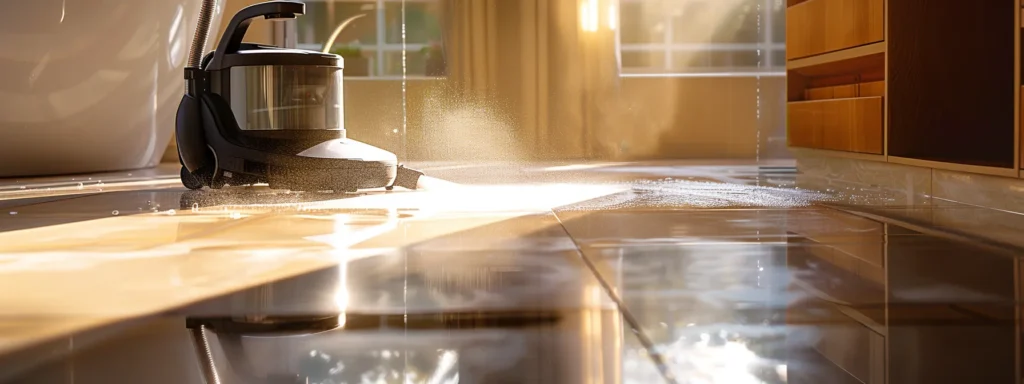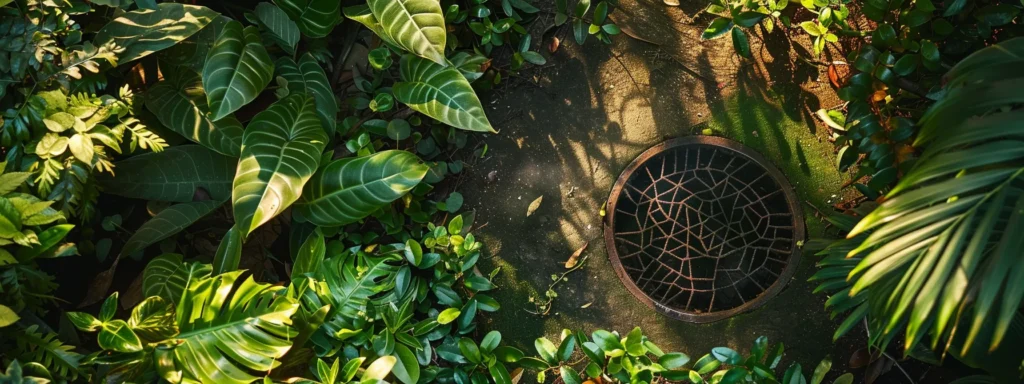How to Unclog Your Drain Without Harsh Chemicals
Clogged drains can be a frustrating reality for many homeowners, often leading to unpleasant bacteria buildup and costly repairs. This guide will share practical methods to unclog your drain without harsh chemicals, focusing on simple techniques like using a kettle of boiling water, baking soda and vinegar, and even a drain snake. By the end of this article, readers will learn how to tackle stubborn blockages effectively while maintaining their plumbing system, including considerations for homeowners with a septic tank or those dealing with drainage issues in the basement. Engaging with this content will equip readers with the knowledge they need to prevent future problems and achieve a healthier home environment.
Essential Takeaways for Safe and Effective Drain Unclogging
- Regular maintenance can effectively prevent common drain clogs caused by hair and grease
- Natural cleaners like baking soda and vinegar promote eco-friendly and efficient drainage solutions
- Employing a plunger correctly can restore flow without chemical solutions in stubborn cases
- Using a drain snake helps clear deeper clogs caused by mineral buildup and other debris
- Monitoring what enters drains reduces debris accumulation, leading to a healthier plumbing system
Understand Common Causes of Clogs

Clogs often occur due to a buildup of materials within the drainage system. Common offenders include hair, soap scum, and food particles, which can create significant blockages over time. For more severe blockages, sewer repair or sewer line repair services may be necessary. Understanding these causes is essential for effective drain maintenance.
Mineral deposits can also contribute to clogs, particularly in areas with hard water. These deposits accumulate on the inner walls of pipes, narrowing the space for water flow and increasing the risk of blockages. Regular cleaning helps mitigate the impact of mineral buildup.
In some cases, tree roots invade plumbing systems, causing severe obstructions. This situation may require the intervention of professionals using rooter plumbing techniques to clear the roots from pipes. Addressing this issue promptly ensures proper flow and prevents further damage.
Cleansing drains regularly with a natural cleaner can prevent many of these common clogging issues. Utilizing a flexible wire can assist in reaching deep obstructions, allowing for an effective removal process. Awareness of these causes empowers homeowners to maintain clear drainage systems efficiently:
| Cause | Description | Solution |
|---|---|---|
| Hair | Buildup in drains from showers and sinks | Regular cleansing and removal |
| Mineral Deposits | Hard water causing scaling in pipes | Use of natural cleaners for maintenance |
| Tree Roots | Roots infiltrating drainpipes | Rooter plumbing services |
Clogs often result from everyday habits. Boiling water can be a simple yet effective remedy to start clearing the way.
Utilize Boiling Water as a First Step

Employing boiling water is an effective initial method for unclogging a drain without harsh chemicals. This simple approach works by breaking down and dissolving grease, soap scum, and food particles that commonly cause blockages.
To enhance effectiveness, homeowners can add a cup of borax before pouring the boiling water down the drain. The combination of sodium in borax with hot water targets stubborn clogs and assists in loosening debris.
Additionally, repeating this process multiple times may further clear the drain. For persistent clogs, a mixture of water and acid can also be beneficial, though this should be used with caution to avoid damage to plumbing systems.
Regularly using boiling water as a preventive measure helps maintain clear drainage systems, reducing the frequency of serious blockages. This eco-friendly alternative supports lawn health by minimizing the introduction of harsh chemicals into the environment.
Boiling water can clear away some of the stubborn buildup. Next, consider the power of baking soda and vinegar to tackle the problem even further.
Apply Baking Soda and Vinegar for Effective Results

Using baking soda and vinegar presents an effective, eco-friendly solution for unclogging drains. This step-by-step guide will outline how the combination breaks down debris, ensuring proper drainage and hygiene. Each step emphasizes practical techniques that homeowners can implement to address common clogs daily while maintaining stormwater systems. With simple materials, this approach supports effective drainage maintenance.
Step-by-Step Guide to Using Baking Soda and Vinegar
To effectively unclog a drain using baking soda and vinegar, begin by pouring about half a cup of baking soda directly into the drain. This environmentally friendly method utilizes the natural properties of baking soda as an abrasive agent to help break down grease and debris. Following this, pour an equal amount of vinegar down the drain. The combination creates a fizzy reaction that gently dislodges clogs without the need for harsh chemicals.
For enhanced results, allow the mixture to sit for at least 30 minutes before rinsing with hot water. Homeowners can use a hose equipped with a nozzle to direct a strong stream of water into the drain, further assisting in clearing any remaining particles. Those seeking more thorough solutions may also consider professional drain cleaning services, which offer expert assistance for persistent blockages, keeping plumbing systems functioning optimally.
If the baking soda and vinegar don’t clear the path, there is another tool at hand. A plunger can often bring hope back into the fight against those stubborn blockages.
Employ a Plunger for Stubborn Blockages

Utilizing a plunger can effectively clear clogged drains, especially in more stubborn cases. This tool works by creating a pressure differential that dislodges blockages formed by soil, hair, or grease. Proper technique enhances its efficiency in restoring proper drainage without the need for chemical solutions.
Before employing the plunger, homeowners should ensure a good seal around the drain. Adding a bit of detergent can help lubricate the edges, making it easier for the plunger to create a vacuum effect. The force generated can help break apart clogs, allowing water to flow freely again.
For best results, homeowners should use a straight plunging action, pushing down and pulling up repeatedly. This method allows the plunger’s suction power to effectively displace the blockage. If the clog persists, considering professional methods like video camera inspections can provide precise insight into tougher obstructions.
Regular maintenance, including the use of baking soda and vinegar, can lessen the frequency of stubborn clogs, making plunging less necessary. Taking a proactive stance in drain care can help maintain clear pathways, ensuring smooth water flow throughout the plumbing system.
Sometimes, a plunger is just not enough. For those tougher blockages hiding deeper in the pipes, a drain snake waits to reveal its secrets.
Use a Drain Snake for Deeper Clogs

Using a drain snake presents an effective method for unclogging deeper blockages, particularly those caused by various materials such as cream, gravel, and other debris. Proper techniques for operating a drain snake can aid in successful drain cleaning, allowing individuals to tackle even the most stubborn clogs. This section will cover key strategies for employing a drain snake and the benefits of carbon dioxide pressure in enhancing the unclogging process.
Proper Techniques for Operating a Drain Snake
When utilizing a drain snake, it is essential to operate the tool effectively to clear deeper clogs caused by materials such as soap scum and hair. Homeowners should begin by inserting the snake gently into the drain, ensuring not to force it, as this may lead to a leak in pipes. By turning the handle clockwise, the user allows the auger to engage with the clog, effectively breaking it apart. This do-it-yourself method can save time and expense associated with professional services.
After the snake is clear of any blockages, it’s advisable to follow up with a thorough rinse using warm water. This helps to wash away any residual debris that might remain in the system. Keeping a roll of paper towels nearby can assist in managing spills that occur during the process. Understanding these techniques promotes efficient drain cleaning and maintains the integrity of the plumbing system:
- Insert the drain snake slowly to avoid damaging pipes.
- Turn the handle clockwise to engage the blockage.
- Rinse the drain with warm water after clearing the clog.
- Keep paper towels on hand to handle any spills.
If the drain snake doesn’t do the trick, there are other methods waiting to be discovered. Another powerful tool, the wet/dry vacuum, offers a straightforward solution for stubborn blockages.
Try a Wet/Dry Vacuum for Efficient Clearing

A wet/dry vacuum can serve as an effective tool for unclogging drains without the need for chemicals. Optimizing the vacuum setup involves selecting the right attachments and ensuring a proper seal around the drain. The following sections will outline techniques for utilizing liquid suction, managing oil clogs, and enhancing efficiency through careful pressure washing methods. Each approach offers practical solutions for maintaining clear drainage.
How to Optimize a Wet/Dry Vacuum Setup
To optimize a wet/dry vacuum setup for unclogging drains, it is essential to select the appropriate attachments and ensure a tight seal around the drain. Properly attaching the vacuum hose to the drain pipe increases suction efficiency, allowing the device to effectively remove debris causing clogs. For challenging blockages, such as those from grease or food particles, adding a few drops of lemon juice to the water in the vacuum can enhance the removal process, making it more effective without resorting to harsh chemicals like hydrochloric acid.
Another key aspect of using a wet/dry vacuum effectively is to utilize it in reverse mode if the vacuum supports this feature. This can help dislodge a stubborn drain clog by applying a strong suction force that directly pulls debris from the drain. Homeowners should also run the vacuum continuously for several minutes to ensure comprehensive clearing, as combining this method with regular maintenance can significantly reduce the likelihood of recurring clogs.
After clearing the muck with a wet/dry vacuum, the next step invites a different kind of remedy. Natural enzymes wait in the wings, ready to enhance your drain flow with their gentle efficiency.
Enhance Drain Flow With Natural Enzymes

Utilizing natural enzymes can effectively promote drain flow while minimizing the risk of corrosion and water damage. Recommended enzymatic products serve as homemade solutions that facilitate the breakdown of organic materials in drains without relying on harsh chemicals like sodium hydroxide. The following sections will cover specific enzymatic treatments and their benefits, as well as insights into professional drain cleaning techniques that enhance storm drain performance.
Recommended Enzymatic Products for Homemade Solutions
When seeking natural drainage solutions, enzymatic products offer a practical alternative to harsh chemicals. These enzyme-based drain cleaners break down waste materials such as grease, hair, and soap scum through a chemical reaction, effectively unclogging drains while maintaining pipe integrity. Utilizing these products regularly can help prevent clogs from forming in the first place, ensuring a smooth flow in the plumbing system.
Several recommended enzymatic drain cleaners are readily available and can be incorporated into routine maintenance. Products containing protease and lipase enzymes work particularly well for tackling organic substances that contribute to drain clogs. When selecting the right enzyme cleaner, homeowners should look for options that emphasize the use of natural ingredients to support the environment while achieving effective results:
- Enzymatic formulations for grease removal.
- Protease enzymes for breaking down organic waste.
- Natural ingredients for eco-friendly cleaning solutions.
Natural enzymes can clear the way for better drain flow, but they are just the first step. Regular maintenance is key to keeping those pathways clear and avoiding future troubles.
Maintain Drains Regularly to Prevent Future Issues

Routine maintenance practices are vital for preventing future drain issues. This section highlights practical tips, including using a mixture of natural cleaners, ensuring regular water heater services, and addressing sewage concerns. Homeowners can also learn about maintaining floor drains and the importance of french drains in managing water flow, which collectively contribute to a healthier drainage system.
Routine Maintenance Practices to Adopt
Implementing routine maintenance practices is essential for preventing drain issues and promoting optimal flow. Regularly flushing pipes with a solution of vinegar and baking soda can help break down organic matter and soap buildup. This cleaning agent combination is effective in clearing away residues that accumulate, keeping drains functioning smoothly and avoiding the need for harsh chemicals.
Homeowners should also be proactive in monitoring what enters their drains. Simple actions, such as using strainers in sinks and shower drains, can significantly reduce the amount of debris that slips through. By preventing hair and soap from accumulating in the pipes, the likelihood of clogs decreases, leading to a healthier plumbing system that lasts longer and operates efficiently.
Conclusion
Unclogging drains without harsh chemicals is essential for maintaining plumbing health and preserving the environment. By implementing natural solutions such as baking soda and vinegar, boiling water, and enzymatic cleaners, homeowners can effectively address clogs while avoiding damaging chemical alternatives. Regular maintenance practices, including mindful monitoring and using strainers, further reduce the risk of future blockages. Embracing these eco-friendly techniques not only enhances drain flow but also promotes a sustainable approach to home care.







